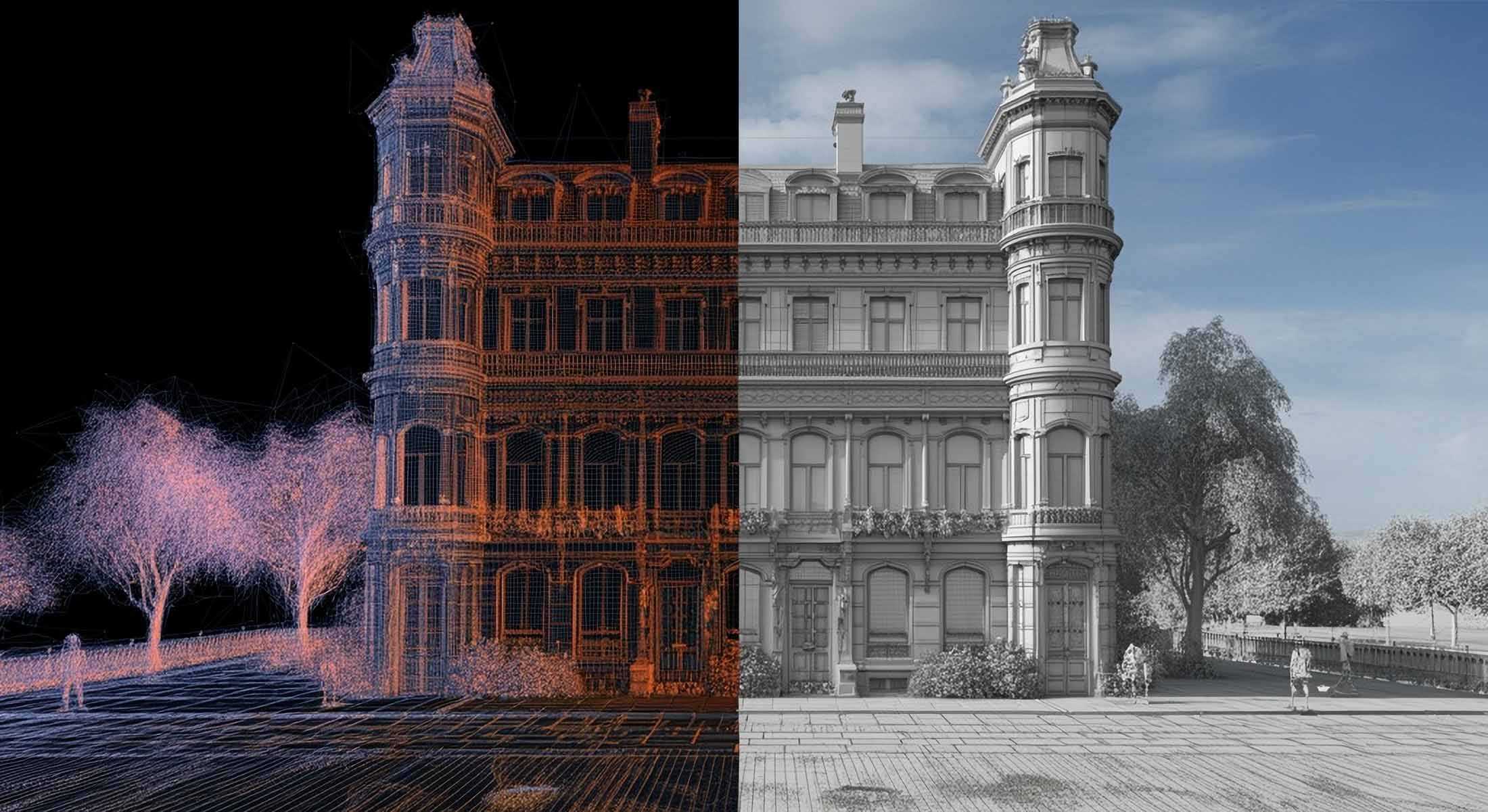Transforming 3D Scene Reconstruction: The Business Benefits of NeRFs and Gaussian Splatting

Creating 3D digital environments has traditionally been a laborious process, often requiring substantial resources and high-end hardware. Artists would either painstakingly build models by hand or employ techniques like LiDAR and photogrammetry. LiDAR, while precise, necessitates specialized equipment. Photogrammetry, on the other hand, demands significant computational power and storage to stitch together numerous photographs into 3D models.
However, the emergence of AI-powered 3D scene reconstruction technologies, such as Neural Radiance Fields (NeRFs) and Gaussian Splatting, has revolutionized this landscape. These innovative techniques can automatically generate highly detailed 3D models from just a few 2D images, streamlining the process and significantly reducing resource requirements.
Why These New Methods Are Effective
Automated Generation from Minimal Input
- Traditional Methods: Relied heavily on manual 3D modeling or the use of specialized sensors to capture spatial data.
- NeRFs and Gaussian Splatting: These technologies can automatically generate 3D scenes complete with textures, lighting, and depth information from a limited set of photographs or video frames.
- 📌 Example: Imagine uploading a few pictures of a room taken from different angles. Within minutes, an accurate 3D model is generated, ready for virtual tours or integration into virtual reality (VR) experiences.
Enhanced Realism
- *Traditional Methods: Often struggled with capturing complex lighting effects, such as reflections, transparency, and soft shadows, leading to less realistic renderings.*
- *NeRFs: Utilize deep neural networks to model the volumetric scene function, capturing intricate light interactions within a scene. This results in highly realistic renderings that accurately depict reflections, transparency, and soft shadows.*
- *Gaussian Splatting: Represents scenes using a sparse cloud of 3D Gaussians, allowing for rapid, high-quality rendering.*
- *📌 Example: Unlike traditional 3D graphics, which can appear artificial or game-like, these models achieve photorealism, making them ideal for applications in film production, architectural visualization, and e-commerce platforms where visual authenticity is crucial.*
Improved Efficiency in Speed and Storage
- *Traditional Methods:* Often involved large file sizes and slow rendering times due to the complexity of the models and data involved.
- AI-Based Methods: Employ efficient data compression techniques and support real-time rendering capabilities, particularly with Gaussian Splatting. This approach reduces both storage requirements and processing times.
- 📌 Example: Consider a real estate virtual tour that loads instantly on a smartphone, providing a seamless user experience without the need for powerful computing hardware.
The advancements in 3D scene reconstruction have far-reaching implications across various industries:
- Entertainment (Film and Gaming): The ability to create photorealistic environments without extensive manual modeling or expensive CGI techniques revolutionizes content creation, allowing for more immersive experiences.
- Retail and E-Commerce: Interactive 3D previews enable customers to visualize products in their own spaces or try on clothing virtually, enhancing the online shopping experience.
- Real Estate: Accurate 3D models of properties facilitate virtual tours, providing potential buyers with a realistic sense of space without physical visits.
- Education and Training: Immersive simulations offer enhanced learning experiences, particularly in fields requiring practical training, such as medical procedures or technical skills.
- Robotics and Autonomous Vehicles: Rapid and accurate 3D mapping of environments improves navigation and operational efficiency.
Benefits for Businesses
Adopting NeRFs and Gaussian Splatting technologies offers several advantages:
- Cost Reduction: Eliminates the need for specialized equipment and manual modeling, significantly lowering expenses associated with 3D content creation.
- Accelerated Production: The automation and efficiency of these technologies enable the development of 3D assets in minutes rather than weeks, expediting project timelines.
- Innovative Applications: Enhanced capabilities open up new possibilities, such as immersive shopping experiences, advanced training simulations, digital twins for monitoring real-world assets, and real-time AR/VR experiences that were previously challenging to implement.
Companies and developers who embrace these technologies stand to gain a significant advantage in various sectors, including media, gaming, e-commerce, and beyond. The ability to create, manipulate, and deploy realistic 3D content efficiently opens up new avenues for innovation and customer engagement. 🚀